 W
WBrighton Rock is a novel by Graham Greene, published in 1938 and later adapted for film in 1947 and 2010. The novel is a murder thriller set in 1930s Brighton. The title refers to a confectionery traditionally sold at seaside resorts, which in the novel is used as a metaphor for the personality of Pinkie, which is the same all the way through. There are links between this novel and Greene's earlier novel A Gun for Sale (1936), because Raven's murder of the gang boss Kite, mentioned in A Gun For Sale, allows Pinkie to take over his gang and thus sets the events of Brighton Rock in motion.
 W
WA Burnt-Out Case (1960) is a novel by English author Graham Greene, set in a Leper colony on the upper reaches of a tributary of the Congo River in Africa.
 W
WThe Captain and the Enemy is the last novel published by the English author Graham Greene.
 W
WThe Comedians (1966) is a novel by Graham Greene. Set in Haiti under the rule of François "Papa Doc" Duvalier and his secret police, the Tontons Macoutes, the novel explores political repression and terrorism through the figure of an English hotel owner, Brown.
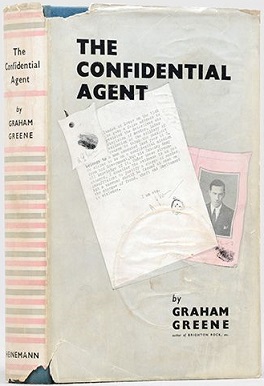 W
WThe Confidential Agent (1939) is a thriller novel by British author Graham Greene. Fuelled by Benzedrine, Greene wrote it in six weeks. To avoid distraction, he rented a room in Bloomsbury from a landlady who lived in a flat below him. He used that apartment in the novel and had an affair with the landlady's daughter. He wrote the book for money and was so displeased with his work that he wanted it published under a pseudonym. But critics took a far different view; The New York Times, for example, called the novel "a magnificent tour-de-force."
 W
WDoctor Fischer of Geneva or The bomb party (1980) is a novel by the English novelist Graham Greene. The eponymous party has been examined as an example of a statistical search problem.
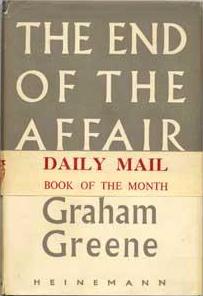 W
WThe End of the Affair (1951) is a novel by British author Graham Greene, as well as the title of two feature films that were adapted from the novel.
 W
WEngland Made Me or The Shipwrecked is an early novel by Graham Greene. It was first published in 1935, and was republished as The Shipwrecked in 1953.
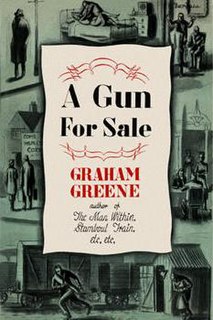 W
WA Gun for Sale is a 1936 novel by Graham Greene about a criminal called Raven, a man dedicated to ugly deeds. When he is paid, with stolen notes, for killing the Minister of War, he becomes a man on the run. Tracking down the agent who double-crossed him, and eluding the police simultaneously, he becomes both the hunter and the hunted. The novel was published and filmed in the United States under the title This Gun for Hire.
 W
WThe Heart of the Matter (1948) is a novel by English author Graham Greene. The book details a life-changing moral crisis for Henry Scobie. Greene, a former British intelligence officer in Freetown, British Sierra Leone, drew on his experience there. Although Freetown is not mentioned in the novel, Greene confirms the location in his 1980 memoir, Ways of Escape.
 W
WThe Honorary Consul is a British thriller novel by Graham Greene, published in 1973. It was one of the author's own favourite works.
 W
WThe Human Factor is an espionage novel by Graham Greene, first published in 1978 and adapted into the 1979 film The Human Factor, directed by Otto Preminger using a screenplay by Tom Stoppard.
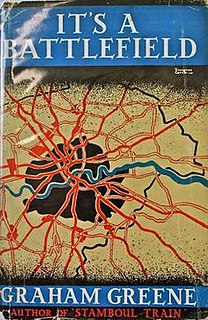 W
WIt's a Battlefield is an early novel by Graham Greene, first published in 1934. Graham Greene later described it as his "first overtly political novel". Its theme, said Greene, is "the injustice of man's justice." Later in life, Greene classified his major books as "novels" and his lighter works as "entertainments"; he ranked It's a Battlefield as a novel and not a mere entertainment.
 W
WLoser Takes All is a 1955 novella by British author Graham Greene. In his dedication Green said he had not written "this little story" to encourage "adultery, the use of pyjama tops, or registry office weddings. Nor is it meant to discourage gambling".
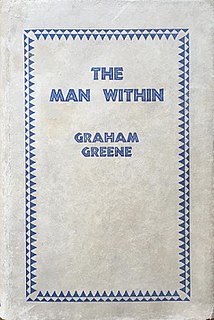 W
WThe Man Within (1929) is the first novel by author Graham Greene. It tells the story of Francis Andrews, a reluctant smuggler, who betrays his colleagues, and the aftermath of his betrayal. It is Greene's first published novel..
 W
WThe Ministry of Fear is a 1943 novel written by Graham Greene. It was first published in Britain by William Heinemann. It was made into the 1944 film Ministry of Fear, directed by Fritz Lang and starring Ray Milland.
 W
WMonsignor Quixote is a novel by Graham Greene, published in 1982. The book is a pastiche of the classic 1605 and 1615 Spanish novel Don Quixote by Miguel de Cervantes with many moments of comedy, but also offers reflection on matters such as life after a dictatorship, Communism, and the Catholic faith.
 W
WThe Name of Action is Graham Greene's second novel, published in 1930. The book was badly received by critics, and suffered poor sales. Greene later repudiated the book and it has remained out of print ever since.
 W
WNo Man's Land is a novella by Graham Greene which was commissioned in 1950 by the film director Carol Reed, although it was not made into a film. The plot is set in Soviet-occupied East Germany shortly after World War II. No Man's Land was published, with a 1949 novella The Stranger's Hand and a foreword to both by David Lodge, in 2005.
 W
WOur Man In Havana (1958) is a novel set in Cuba by the British author Graham Greene. He makes fun of intelligence services, especially the British MI6, and their willingness to believe reports from their local informants. The book predates the Cuban Missile Crisis, but certain aspects of the plot, notably the role of missile installations, appear to anticipate the events of 1962.
 W
WThe Power and the Glory is a 1940 novel by British author Graham Greene. The title is an allusion to the doxology often recited at the end of the Lord's Prayer: "For thine is the kingdom, the power, and the glory, forever and ever, amen." It was initially published in the United States under the title The Labyrinthine Ways.
 W
WThe Quiet American is a 1955 novel by English author Graham Greene.
 W
WRumour at Nightfall is the third novel by Graham Greene, published in 1931. Like his second novel, The Name of Action, it failed to repeat the success of his first novel, The Man Within; Greene was to suppress both his second and third novels.
 W
WStamboul Train is the second significant novel by Graham Greene. Set on a train journey from Ostend to Istanbul, the book was renamed Orient Express when it was published in the United States. The novel appeared in 1932 and was Greene's first true success. It was taken on by the Book Society and in 1934 adapted as the film Orient Express.
 W
WThe Stranger's Hand is a 1954 British-Italian international co-production thriller-drama film directed by Mario Soldati. It is based on the draft novel with the same name written by Graham Greene. The plot follows the son of a British MI5 agent kidnapped in Venice by agents of Yugoslavia as he searches for his father.
 W
WThe Tenth Man (1985) is a short novel by the British novelist Graham Greene.
 W
WTravels with My Aunt (1969) is a novel written by English author Graham Greene.